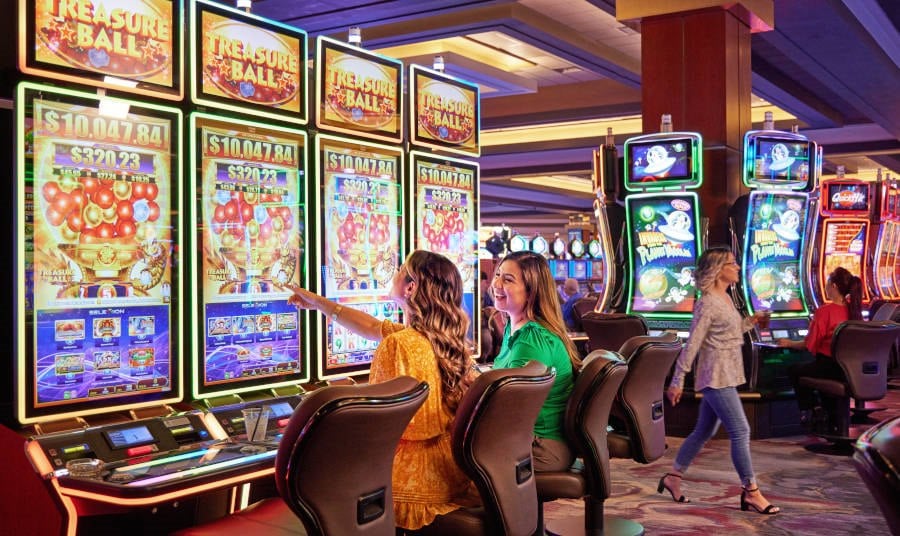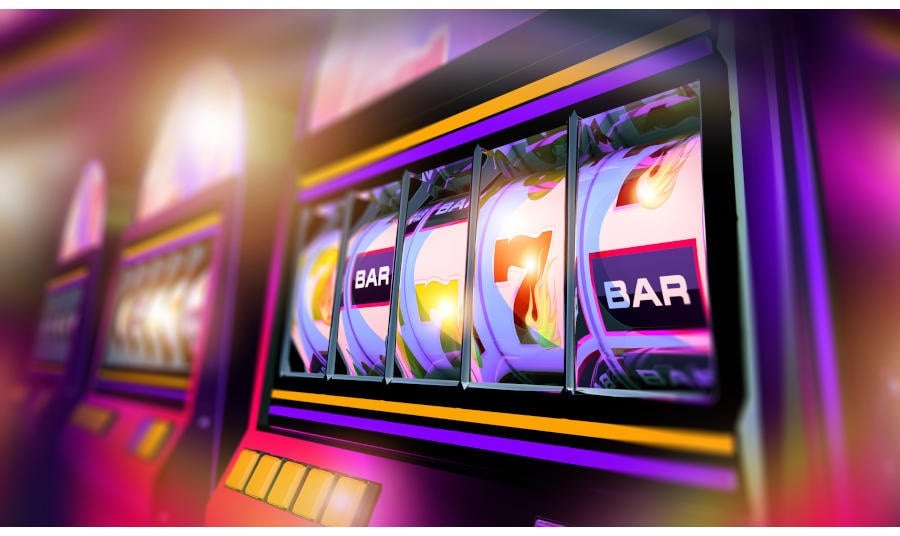
RTP in Slots: Understand Payouts and Volatility
Slot machines are among the most exciting and accessible games in any casino, offering a wide range of themes, features, and payouts. But behind the spinning reels and flashing lights is a key concept that every player should understand: Return to Player, or RTP. Knowing how high and low RTP slots work, and how they relate to slot volatility can help you make more informed decisions, manage your expectations, and get more enjoyment out of your gameplay. What is RTP in Slots?
RTP stands for Return to Player, representing the percentage of all wagered money a slot machine is programmed to pay back to players over time. For example, a slot with a 96 percent RTP will theoretically return $96 for every $100 wagered, though this doesn't mean you'll get exactly that on any given session. RTP is calculated over millions of spins and is best viewed as a long-term average, not a short-term guarantee.How RTP is Calculated
RTP is determined through extensive mathematical modeling and testing, typically conducted by the game developers and verified by independent regulatory bodies. The calculation involves simulating millions, if not billions, of spins to determine how much the machine pays out versus how much it takes in. These simulations consider every symbol combination, bonus feature, and payout structure.Importance of RTP for Players
RTP gives players insight into the expected return of a slot machine over time. While you can't control the outcome of any single spin, understanding the RTP can help you choose games that offer better long-term returns, manage your bankroll more effectively, and set realistic expectations about wins and losses. Higher RTP slots tend to be more player-friendly in the long run, which works out for those who enjoy extended play sessions.Impact on Payouts
A slot with a higher RTP typically returns more money to players over time than one with a lower RTP. However, this doesn't always mean bigger individual wins; it just indicates better overall payout behavior. Due to the randomness of each spin, it's possible to win big on a lower RTP slot or to experience a losing streak on a high RTP one.
Influence on Game Experience
RTP plays a subtle but important role in shaping a slot's overall experience. High RTP slots might offer more frequent, smaller wins, helping to prolong gameplay and enhance entertainment value. Meanwhile, lower RTP games may be geared toward high-risk, high-reward experiences, where big wins are possible but less frequent. 
Understanding Slot Volatility
While RTP tells you how much a slot pays out over time, volatility (also called variance) tells you how it pays out. Slot volatility describes the risk level of a game and how often you can expect to win.
Types of Volatility
- Low Volatility: Frequent but smaller payouts. Ideal for casual players or those with limited bankrolls.
- Medium Volatility: A balanced mix of win frequency and payout size. Great for most players.
- High Volatility: Infrequent wins, but the potential for large payouts. Best suited for thrill-seekers or players chasing jackpots.
Relationship Between RTP and Volatility
RTP and volatility are related but distinct concepts. A slot can have a high RTP and still be high volatility, meaning you might win big, but not often. Conversely, a low volatility game may have a similar RTP but spread it out through frequent small wins. What is Considered a Good RTP Percentage?
When choosing which slot machine to play, one of the most important numbers to look at is the RTP percentage. This figure helps players understand how generous a slot game is expected to be over time. But what exactly is considered a good RTP?
Industry Standards
A good RTP is typically 96 percent or higher in most reputable casinos. This means the game returns an average of $96 for every $100 wagered over time. Here's a quick breakdown: - Above 98 percent: Excellent RTP - very rare.
- 96 percent - 97.9 percent: Good RTP - standard for many popular slots.
- 94 percent - 95.9 percent: Average RTP - still acceptable, especially for high-volatility slots.
- Below 94 percent: Low RTP - less favorable for long-term play.
Remembering that RTP is just one part of the equation is important. Even with good RTP, high-volatility slots can still result in long dry spells between wins.
Comparing Online and Physical Slots
Most online slots range between 95 percent and 98 percent, while physical slot machines often fall between 88 percent and 94 percent, especially on busy casino floors where foot traffic compensates for tighter margins. Lower operating costs and greater competition in the online casino space allow game developers to create more player-friendly RTPs to attract and retain users.
Highest RTP Slots Available
While most players are happy with anything over 96 percent, some slot titles are famous for having particularly high RTPs, making them ideal for players looking to stretch their bankrolls or improve their long-term odds.

Where to Play High RTP Slots
Resort casinos like Cache Creek Casino Resort offer select high-RTP slots on the floor, especially in video or themed slot sections.
Benefits of Playing High RTP Slots
Choosing games with higher RTPs offers real advantages, especially for players who enjoy extended play sessions or are mindful of bankroll management. These benefits include:
Long-term Payouts
A higher RTP doesn't guarantee wins but improves your expected returns over time. If you're playing for several hours or across multiple sessions, a game with a 97 percent RTP will statistically return more than one with 91 percent.
Player Satisfaction
Higher RTP games often feel more rewarding, with more frequent wins or sustained playtime. This can make for a more enjoyable and less frustrating experience, especially for casual players who are there to have fun, not just chase jackpots.
Common Misconceptions About RTP
Unfortunately, many common misconceptions about RTP can cause some to make poor gameplay decisions. Here's the truth you need to know about some common misconceptions:
RTP vs. Winning Frequency
Many players confuse RTP with how often a machine pays out. In reality, a game can have a high RTP but low hit frequency, meaning that it pays less often but in larger amounts. Conversely, a game with lower RTP and high frequency might deliver frequent small wins, creating the illusion of higher payouts.
RTP as a Guarantee
It's important to remember: RTP is not a guarantee of individual winnings. It's an average based on millions of spins. Regardless of a machine's RTP, you might win big or lose quickly. Use it as a guide, not a prediction.
Responsible Gambling and RTP
While understanding RTP can help inform your slot choices, it's equally important to approach slot play with a responsible mindset. Gambling should always be a form of entertainment, not a way to make money or solve financial issues. Knowing your limits and playing within them is key to enjoying a positive, stress-free gaming experience.
Understanding Risks
Even with high-RTP slots, slot machines are games of chance, not skill. Random outcomes determine wins and losses, and no amount of strategy can change that. This means that you can still lose money even on a slot with a 98 percent RTP. Understanding this risk helps set realistic expectations and encourages healthy play habits.
Setting Limits
Responsible gambling starts with setting boundaries, including:
- Set a budget before you start playing and stick to it.
- Decide on a time limit to avoid prolonged sessions.
- Avoid chasing losses - what's lost is lost.
- Take breaks and step away if you're feeling frustrated or tempted to spend more than you planned.
By being proactive, you ensure the experience remains fun and in your control.
FAQs About RTP in Slots
What Does a 96% RTP Mean?
A 96 percent RTP means that, over the long term, a slot machine is programmed to return $96 for every $100 wagered. Remember that this is an average of millions of spins and is not a promise for any individual session.
Is a Higher RTP Always Better?
Generally, yes. Higher RTPs mean better odds over time. However, other factors like volatility, theme, and bonus features also impact your enjoyment and potential payouts. A high RTP slot might pay less frequently, while a slightly lower one could deliver more engaging gameplay or bonus rounds.
Play Slots at Cache Creek Casino Resort
Ready to spin the reels with confidence? Cache Creek Casino Resort offers one of Northern California's top slot experiences, with thousands of exciting machines, including the latest themed video slots, classic favorites, and progressive jackpots. Whether you prefer high-RTP slots, interactive bonus rounds, or low-stakes entertainment, there's a game for every player and every budget. Visit Cache Creek in Brooks, CA, today and discover a dynamic gaming environment where fun, excitement, and responsible play come together. Spin smart, enjoy the ride, and maximize your slot experience.
